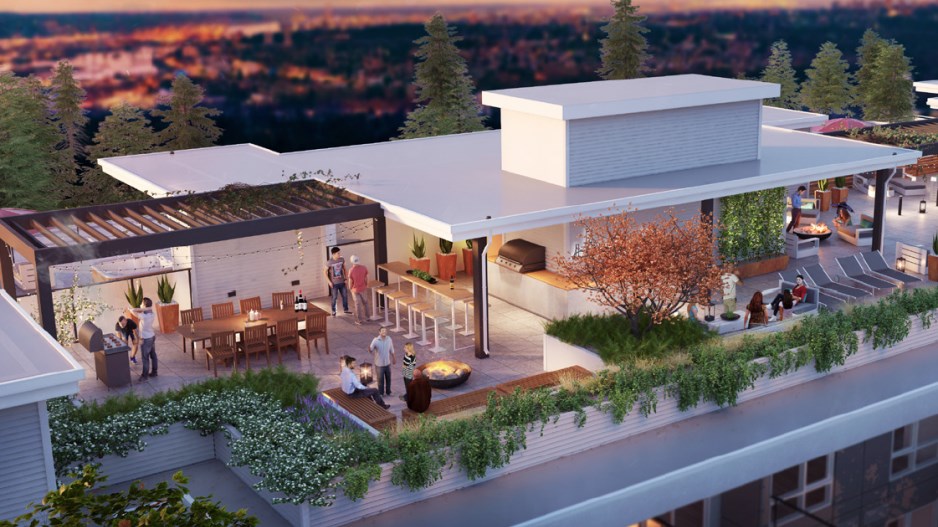Building new condominium projects out of new “smart” wood can save builders time and buyers money while protecting the environment, claims Adera Development Corp.’s vice-president of marketing and sales.
Adera, which this year celebrates 50 years during which it has built approximately 11,500 homes, has switched to building with cross-laminated timber (CLT) in its projects, said Eric Andreasen.
The company is currently developing a six-storey, 72-unit condo building and plans a neighbouring stacked townhouse project in west Coquitlam.
Building with CLT, he claimed, is less expensive than either concrete or standard stick-frame construction.
Andreasen added that the factory-built CLT panels are much cheaper than concrete and less labour-intensive than building with conventional wood framing.
“This is smart wood,” he said.
Adera is pre-selling condos at its new Duet project from $700 per square foot, which Andreasen said is “considerably less” than the prices for new concrete condo towers in Coquitlam.
According to a second-quarter survey by Fifth Avenue Real Estate Marketing, the average pre-sale price of concrete highrise condos in the Coquitlam market ranges from $850 to $955 per square foot, while stick-frame low-rise condos are pre-selling to a maximum of $760 per square foot.
Andreasen said the savings at Duet are because the “mass timber” CLT panels are premanufactured in B.C. and require less labour and time on site than concrete, which uses rebar and must be poured and allowed to set.
He added that CLT is also fire resistant and as quiet for residences as concrete construction.
It is also greener, according to the B.C. government, which this year changed the provincial building code to allow mass timber structures of up to 12 storeys.
“Mass timber technology allows faster construction where large sections of a building can be manufactured in a plant and then assembled on site,” said B.C. Housing Minister Selina Robinson in a statement.
The University of British Columbia’s Brock Commons student housing, at 18 storeys, was a pilot test for a highrise residential building constructed out of mass timber when it opened two years ago. According to the B.C. government, the estimated carbon benefit from the wood used in the Brock Commons building was equivalent to taking 511 cars off the road for a year. •




